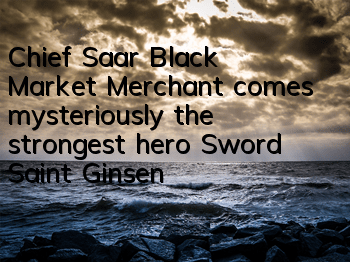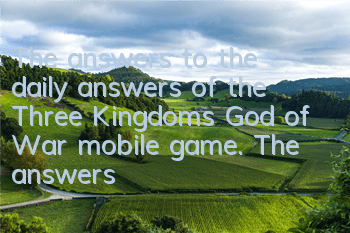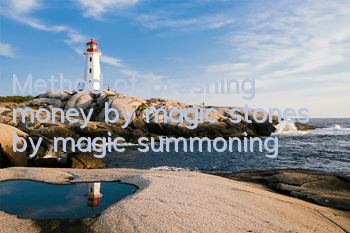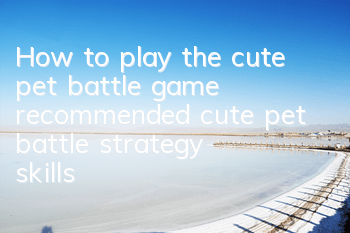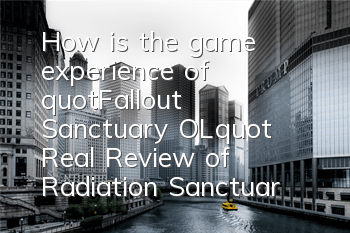Dota Card Artifact Newbie Guide
Under translation of the NGA valve wood part, reproduction is strictly prohibited
A series of miscellaneous tasks such as translation and layout table production: one of the only two designated monster hunters in the Valve Wood Department [@光博]
Note: I have made a lot of changes to this article, and I have cut a lot of useless parts.
Foreword
As a card game, Artifact has a greater impact than DOTA2, but how big is the impact?
In the official video released, the designer has explained how the game reduces the impact of RNG factors on the game as the number of turns continues to move forward. Compared with other DCG games, Artifact needs to make much more decisions, and each decision point shows the difference between masters and novices. This is the main reason why Artifact is how to get rid of random control.
Simply put, Artifact is actually the card game closest to chess.
It may be difficult to describe. Simply put, novices of Artifact will not lose due to randomness when they first come into the game. Personally, although there may still be several games that will lose due to the opponent's god draw or your own jammed game, the combined games may be more games that will lose due to luck in StarCraft.
StarCraft is basically recognized as the most competitive and balanced game (PIMBA!) Players usually use one way of playing before they start without scouting.
This also involves the impact of luck. For example, two players with similar levels Z use the 10D Blood Pool 1 Queen Single Mineral Dog Raises Speedy Tactics to beat the opponent's double BG. I don't know how to lose, but A won in the face. If you change to his home, don't rush to the intersection, why do you rush to the intersection and ask me to... Cough cough sorry
But if this situation is placed on two players with very different levels, the situation will be completely different. Experts can easily crack the newbies' RUSH tactics. I believe that the same is true for Artifact. Although RNG still has an impact on the game, skilled players can still easily defeat the newbies. For this reason, I think players who are randomly dismissed from other card games may be more interested in Artifact.
Although this is already the most difficult and balanced game in e-sports, luck is still an indispensable element
This is not to say that the game Artifact does not have RNG elements, in fact, this game is full of randomness: randomGenerating minions, random hero initial position, random attack direction, store random items, etc., etc., but confusing randomness with skills is a manifestation of shortsightedness. Just like Chess or StarCraft, this game only takes a few games to get started, but it is very difficult to master it. As the saying goes, it is better to teach people how to fish than to teach people how to fish. Although this guide will definitely include as much teaching as possible, this article aims to teach readers game skills rather than letting them copy homework.
Computation and measurement of resources
Concept of ResourcesIn Artifact, everything in the hands of players can be measured by resources, including most explicit and implicit resources.
Optical resources are usually very intuitive, such as the player's hand gold coins mana value, but the hidden resources are hidden a little deep. I want to use the following example to briefly illustrate the following:
In this round, we only seem to have one choice, which is to use duel against the Winter Dragon and the Steel-Back Beast. This will kill the opponent's cold winter dragon and provide us with 5 gold coins, as well as let our soldiers cause 2 damage to the opposite defense tower. The price is 2 mana points and 6 mana points of the life of the steelback beast + one duel + 2 mana points.
However, in fact, the more important thing is that after the flying dragon is killed in the cold winter, the opponent will not be able to play cards of any color. This means that we use 2 mana points per hand to exchange for the opponent's 3 mana points (because the opponent can only pass it), and there is a high probability that the opponent will pass it by 4 costing in the next round. Although the player can unlock these "locked mana points" by redeployment after the hero is resurrected, the hero's deployment stage is equal to another hidden resource system. From another perspective, playing this duel also made us lose the first move, which is also a resource factor that must be considered.
So to summarize, the following are the resources needed for "playing a duel" that seems very simple:
Dull the card itself;
First attack power;
The 6 health points of the Steel-Back Beast;
2 mana;
So what do we get?
Kill the 5 gold coins of the opponent's cold winter dragon;
Save melee troops and has 2 additional damage to the tower;
The opponent's mana points in this round;
High probability opponents have 4 mana points in the next round;
The opponent's hero deployment after 2 rounds;
If this list is the sum of all the factors that need to be considered in this game, you can do a math problem by subtracting expenses to calculate whether the card is worth it. What players need to do is to calculate these profits and losses in the brain during the game, andHelp yourself make decisions.
Suppose we knocked this card in this round, but what should we do if we found out in the next few rounds that it would be better if we kept this card? Many players will be undecided in their future game decisions because of this kind of failure.
In fact, it is very simple to get rid of this idea, if this decision proves to be an irrational behavior after losing the game. Then you just need to know how much more benefits can be compared to the first one if you choose the second option, then you can make the best choice when you encounter this situation again next time. At the same time, you will also think about when you should play this card in different decks (for example, this card is a construction in the late deck, so it is the core for me to ensure that you can survive in the middle and late stages. Then it is more valuable to retain card decorating spells at critical moments to resolve the field than the hand on the opposite card). This is the process of experience accumulation.
The process of constantly accumulating experience and adjusting decisions is the process of players becoming stronger. Let's go to the second part of this chapter "Time factor"
Time FactorThe first thing to know is that as the game round progresses, the killing of heroes will become more and more threatening. The impact of heroic deaths in the second round is often stronger than the first round of deaths, especially when there is the first move, the spell that often takes the lead can directly block the opponent's actions. The factor that affects this is the number of rounds, that is, time.
Although you can use spells to kill werewolf this round, the best choice is to pass this round by vacancies and use skills to finish the next round.
As the game round goes on, both sides will gain more and more mana limits, and the hands will start to play a stronger effect due to the increase in mana. In other DCG games, it is basically difficult to interchange with the opponent's mana, but in Artifact, you can interact with the opponent in real time. Since 4-costs are generally stronger than 3-costs, killing the opponent in the second round will prevent the opponent from playing 4-cost spells that are stronger than 3-costs. The heroes who are killed at the same time will be reborn in the third round, and the original hero with 3 costs will be reborn in the third round. In the third round, your opponent will have 2 heroes joining the battle.
If the only thing that can be considered in Artifact is digital resource synthesis, then this game might as well be left to AI to play, which is because the game has so many points and variables that need to be considered, which creates the Artifact game.
Relationship between resources
Time (round) plays the most important factor among all resources on the above question of "kill or not" or "when to kill", but killing a hero requires a mana value and is also one of the factors that need to be considered. In ArtWhen making decisions in ifact, you should know that the echelon of resource importance is not always fixed, but there is a relationship between these resources.
Broadly speaking, there are six important resources in Artifact:
Hero:
You can't play other cards without a hero. Of course, the resource of hero is a general term, which also includes hero deployment, movement, killing, etc.
Mana:
Gold:
First attack power:
Defense Tower Health:
Card:
The higher utilization rate of mana is always one of the most important factors for Artifact to win, and the importance of hand poor compared to other DCG games is not that high. As the game goes on, you should turn the focus to the first attack power and the health of the defense tower.
Mana ValueMana Value is the glue that glues all other resources together, and the mana value can directly affect all other resources. Repeat the above content: "The utilization rate of mana is higher than that of opponents has always been one of the most important factors for winning the game Artifact", and the easiest way to consume mana more effectively than opponents is to make the opponent unable to play cards (that is, kill enemy heroes)
If the players on both sides are very close in their technical level and the deck strengths of both sides are similar, then players who can play cards with higher mana values than the other party can always win the game (this will be different when the fast attack deck is against the control deck, because the fast attack deck will hardly bring cards consumed by high mana values). When both sides are control decks, the key is that when and where the players on both sides play KEY cards is the most important thing.
Return to the above question of "kill or not" or "when to kill", mana is the most important related factor for all resource values. Although it is generally much simpler and more intuitive to control your mana than to control your opponent, it is always remembered that making your opponent unable to play cards is equally important as playing your own hands.
HeroMana and hero are actually two inseparable parts, because heroes must be supported online to consume mana. If our goal in a game is to consume more mana than the opponent, then in order to achieve this goal, we need to have excellent control over the hero's deployment and the death round.
In the early stages of the gameHeroes are the most important offensive force. Except for some low-cost hero-exclusive cards, most cards cannot kill a hero in the early stage. As the game progresses and the players have more and more abundant mana resources, the importance of the hero's attacks and skills begins to decline, while the importance of the hero to the hand begins to rise. This means that the influence of heroes in the early and mid-stage game depends on their route and their ability to kill against the minions. The importance of heroes in the late game is reflected in the issue of mana consumption. (Or using heroes to block attacks or using heroic ability to protect the tower)
First attack power is like a hero and mana resource inseparable, the first attack power and hero control are also two inseparable parts. After the mid- and late stages of the game have reached a fever pitch, players who have the right to attack first on key lines can often decide the outcome of the game.
Please make up for the endgame in which both players lost an outer tower separately. Whoever can gain an advantage in the decision line can win the entire game. This is why the cards that give players the initiative are so important in the later stage of the game.
In such a late-stage situation, the first attack power is an important resource
The power of Artifact cards increases exponentially with the increase in mana consumption, so during the game, players need to carefully analyze the opponent's construction and figure out the opponent's high-cost KEY cards (such as lunar eclipse or victory moment). These cards can often flip the entire scene of a line. When your opponent has enough fees, because the player can pass two cards in one turn, it may already have one or even more such KEY cards in his hand. (This situation is most likely to occur under normal construction, because a deck can be made into three cards) Therefore, it is essential to deal with these cards in advance. Of course, as mentioned above, the easiest way to deal with this problem is to kill the opponent's hero when you have the right to attack first and let the opponent have no cards to play. It can be simply understood as: preventing hula, preventing crushing the wall, I will be a dog if I go on four more
Health of the Defense TowerIn the early stages of the game, the health of the Defense Tower is insignificant in most cases, but this resource is the most important one in the later stage of the game. This also means that in order to establish a scene advantage in the early stage, it is worth it to get hit by the defense tower twice. So although it is a very attractive choice to shoot a siege ladder in the first round when the divine draws, in fact, the most suitable way to use this card is to kill the turn.
As the turn progresses, the health of the defense tower and the right to attack begin to become closely connected. In the middle and late stages of the game, there are often times when both players on both sides do not have high-cost spells to end their opponents. In order to prevent the opponent from guessing their actions, they keep playing the weakest and lowest in their hands.Keep the best cards for the end. In contrast to the above, in this case, players often want to fight back.
PS:You can refer to ["A Brief Talk about the Health of Artifact Extra Resources"] for extended reading.
Hands and gold coinsFirst of all, the tips:
The cards the player draws from the deck are white borders, while the items show golden borders
The difference in hand cards in Artifact is not that big on the game compared to Hearthstone and Magic. In most DCG games, the early and mid-terms are usually the process of players swapping hands. Players who have more hands after the dust settles usually gain an advantage. Once again, the explosive card fish will withdraw from the environment! , the side with more hands will gain an advantage in the later stage by the number of hands. And all this is based on the fact that players can use up all the cards they come up with in one turn until their resources are exhausted.
This situation basically does not occur in Artifact's master matchup. First of all, players can pass two cards in one turn, and often they cannot play their hands. For example, there are many cards in the fast attack deck that cannot be played before the game ends. This also means that the status of purchasing equipment and props through gold coins is generally higher than other cards in the early and mid-game period.
In the early days of the game, hand cards and item props were very complicated. Although it is indeed attractive to earn gold coins by killing the opponent's hero with one spell to buy items, low-cost damage spells are likely to be countered by cheap items such as healing ointments, so my advice is not to invest a lot of damage cards on the opponent's hero in the early stage, unless you make sure that the spell can receive a head instead of being left for the battle round. In the middle and late stages of the game, because the equipment strengthens the heroes and the need to ensure that the heroes stand on the field to play the same color hand, players are increasingly inclined to let the heroes live rather than die and wait for the full state. At this stage, it is wise to use low-cost damage spells to suppress the blood of the heroes on the opposite side to force them to use various cards to protect their heroes. This is much better than the opponent spending items against your spells, as they need to spend mana resources in later exchanges.
As my personal advice is to buy cheap props early and mid-stage of the game instead of saving money to buy expensive ones. As the game progresses, props like the Traveler's Cloak will become weaker and weaker. It can help your hero stand on the field in the first few rounds, and you should consider replacing it later. In terms of consumables, the return scroll has always been a prop for the panacea. The importance of this prop at all stages of the game is not much to describe, so my recommendation is that even if you don’t plan to use it at the moment, it is best to buy one with precautions.

